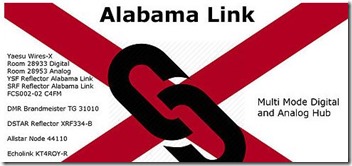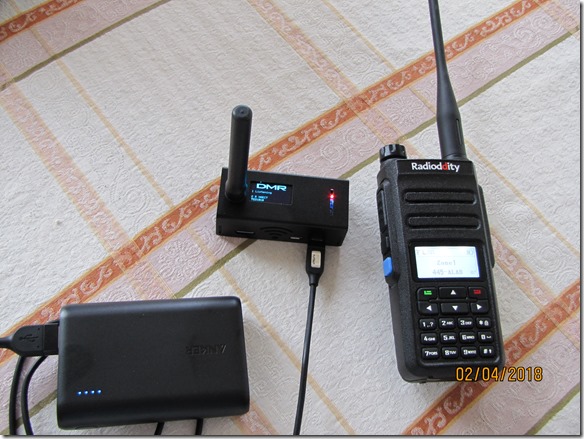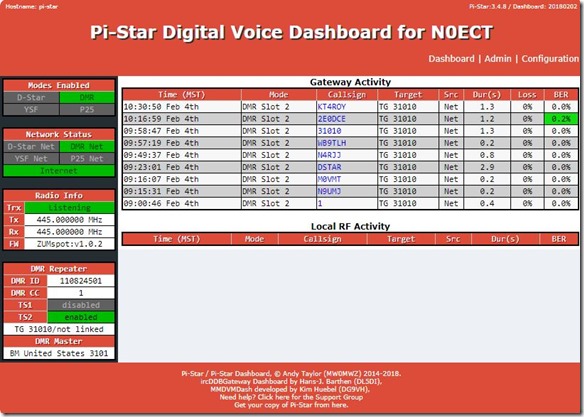by N0ECT
Today’s Digital Amateur Radio (DAR) – has almost nothing to do with HF
Arguably, DAR is the fastest growing segment of Amateur Radio Hobby today.
 The big Commercial Radio companies were first to enter that Digital Radio market – however Amateurs have been quick to catch up – and are now providing Digital Radio “cross-connections” between different proprietary Digital Radio systems and they’re running those online today.
The big Commercial Radio companies were first to enter that Digital Radio market – however Amateurs have been quick to catch up – and are now providing Digital Radio “cross-connections” between different proprietary Digital Radio systems and they’re running those online today.
Are you Ready to explore genuine Digital Radio for Amateurs?
Step 1 – Turn OFF your HF Rig
What you’ll need…is some new Radio vocabulary to hang with the younger Hams that are pushing the limits of what Digital Amateur Radio can do today. Did you know that Amazon’s “Echo/Alexia” product is being integrated with DAR today? Young Hams with well developed SW and Programming Skills are leading and testing those new innovations right now. Who would have thought?
Step 2 – Think of the Internet as your worldwide Repeater System. The “band conditions” on this Repeater System are always open 7x24x365. “BrandMeister” servers are something you’ll likely be using for day to day World Wide DAR communication. The growth in BrandMeister DMR connections has been exponential over the last year. The focus in this DAR community is testing, exploring, engineering and building new Radio Repeater/Hotspots and interconnections. Adding endless, brief QSO’s in a log file is not what DAR is all about.
Step 3 – You don’t have to “break the bank” with your choice of a new Digital Radio – some models are under $100.00/Amazon. You also might need a “HotSpot” you can build or buy for about $100.00 DMR (Digital Radios) are by far the most affordable compared to DSTAR (Icom’s Digital Radio) and C4FM (Yaesu’s System Fusion) Digital Radios – so we’ll stay focused on DMR for now. “PileUps” don’t exist in the world of DMR. If you click on the graphic to the right you can listen to the Digital Radio World of BrandMeister – just by using your computer, no need for a DMR Radio – just to listen – to perfectly clear Digital Radio Audio.
are by far the most affordable compared to DSTAR (Icom’s Digital Radio) and C4FM (Yaesu’s System Fusion) Digital Radios – so we’ll stay focused on DMR for now. “PileUps” don’t exist in the world of DMR. If you click on the graphic to the right you can listen to the Digital Radio World of BrandMeister – just by using your computer, no need for a DMR Radio – just to listen – to perfectly clear Digital Radio Audio.
 are by far the most affordable compared to DSTAR (Icom’s Digital Radio) and C4FM (Yaesu’s System Fusion) Digital Radios – so we’ll stay focused on DMR for now. “PileUps” don’t exist in the world of DMR. If you click on the graphic to the right you can listen to the Digital Radio World of BrandMeister – just by using your computer, no need for a DMR Radio – just to listen – to perfectly clear Digital Radio Audio.
are by far the most affordable compared to DSTAR (Icom’s Digital Radio) and C4FM (Yaesu’s System Fusion) Digital Radios – so we’ll stay focused on DMR for now. “PileUps” don’t exist in the world of DMR. If you click on the graphic to the right you can listen to the Digital Radio World of BrandMeister – just by using your computer, no need for a DMR Radio – just to listen – to perfectly clear Digital Radio Audio.
DMR (Digital Mobile Radio) is an “open” spec developed in Europe. (side note) Motorola adopted it, added their own proprietary digital extensions – and market their Motorola Commercial Digital Radios as part of their “MotoTrbo” product line.
DMR for Amateur Radio can be used with or without a (example: Mountain Top) DMR Repeater. There is no requirement to be connected to the Internet to have DMR Radio working for you. DMR/Simplex (example: 146.520Mhz) works just fine.
Q.) If I’m the only Ham in my geography with a DMR Radio – how do I use it to communicate with other Hams?
Answer: You can use a DMR HotSpot that you can buy as a Kit or build one yourself for about $100.00. Photo below shows a DMR Hotspot with a standard USB Battery PowerPak and a Radioddity GD-77 VHF/UHF DMR (Tier II) Radio. Yes, the DMR HotSpot below uses a WiFi connection to the Internet to reach the BrandMeister Servers. Below is using the WiFi my iPhone can provide for complete Portable/DMR operation anywhere in the world.

DMR Hand-held (HT) Radios (Tier II) can be had on Amazon for well under $100.00 They provide traditional analog FM (VHF & UHF) capabilities (just like your Baofeng) in addition to DMR. Other Models of DMR HT’s include (TYT/MD380 and 390 – AnyTone AT-D86UV – Retevis RT82). Interestingly, these new DMR HT’s are (SDR – SW Defined Radios) that can be easily upgraded by loading new (Firmware/Software) into the HT. Bug fixes and in particular new DMR features are being released all the time. Be aware that you won’t find much information on the ARRL web site – about this – the younger Hams are using Facebook, dedicated Facebook Groups and Vendor Web sites and Blogs to share their new information, capabilities and upgrades. (Click Here)
More on the HotSpot…As shown above the HostSpot uses a Raspberry Pi “ZERO”computer and a small “daughter card” that plugs on top of the Raspberry Pi “ZERO”. The daughter card is the low power UHF Transceiver that the Radioddity uses to reach the DMR/BrandMeister Servers on the Internet – if you want to operate on the DMR World Wide community.
Setting up the HotSpot: The MicroSD card that the Pi Zero uses as its hard drive…is powered by FREE software known as “Pi Star”. The Pi Star SW (developed in the UK) is controlled by an easy to use “Web Browser Interface” that is simple to use for setup from a PC or Mac. More information on DAR soon. 73s – N0ECT

No comments:
Post a Comment